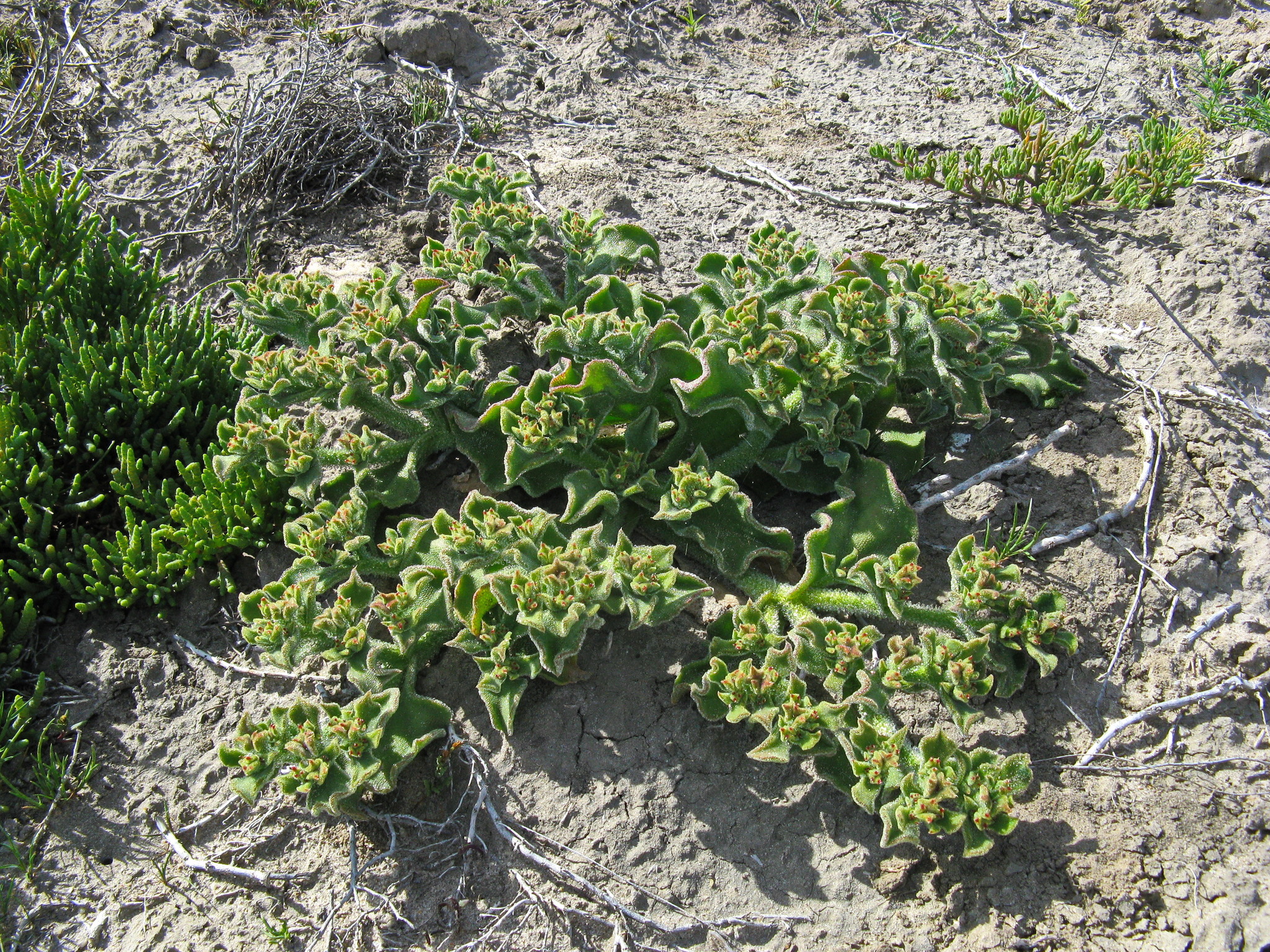
Roger Spencer & Andrew Thompson
Succulent annual or perennial herbs, occasionally small shrubs. Leaves variable, fleshy, mostly in opposite pairs that are fused at the base, the tip sometimes with a translucent 'window'; stipules mostly absent. Flowers with parts in whorls, bisexual, regular, solitary or in clusters, often with fleshy bracts. Sepals mostly 5, occasionally 3-15, generally free, sometimes united into a tube at the base. Petals numerous arranged in rows, generally free but occasionally fused into a tube at the base. Stamens numerous with sterile ones grading into the petals; filaments sometimes joined at the base. Nectaries may be present, to the inside of the stamens, sometimes as a distinct ring of tissue. Ovary mostly inferior or half inferior, occasionally superior; ovule placentation mostly parietal (sometimes appearing basal), occasionally axile. Fruit a dry capsule mostly with 5 chambers but ranging from 4-20, occasionally a berry or nut; seeds numerous.
The family is classified largely by fruit structure (not emphasised here); further revision is likely to reduce the number of species.
A family generally considered closely related to the Phytolaccaceae or Cactaceae. Plants of several genera are grown in floral displays for the electric colours of their daisy-like flowers while others are accumulated in specialist succulent collections. Their succulent habit and structure is well adapted to exposed, dry conditions many growing naturally in deserts. There are several genera of interest to specialist succulent growers including Lithops, Living Stones and Conophytum, Cone Plants. Aloinopsis, Desert Jewel or Limestone Leaf Plant is occasionally cultivated.
In dry climates Tetragonia tetragonioides, Native or New Zealand Spinach, is used sometimes used as a vegetable.
Stems and leaves succulent; spines absent; flowers with numerous petals and stamens.
About 127 genera and 2500 species in drier parts of the tropics and subtropics but with a centre of distribution in the winter rainfall region of southern Africa. In Australia the family is widespread across the south of the continent with 8 genera and 39 species native although this number is doubled if naturalised taxa are included.
Herre (1971).
The key should be used as a guide only as many additional genera may be encountered in specialist collections.
Source: (1997). Aizoaceae. In: . Horticultural Flora of South-eastern Australia. Volume 2. Flowering plants. Dicotyledons. Part 1. The identification of garden and cultivated plants. University of New South Wales Press.
